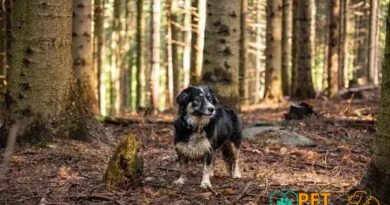Curiosities About the Lancashire Heeler: Discover its Unique Traits
The Lancashire Heeler is a small, energetic dog breed known for its keen intelligence and loyal nature. Originating in England, this breed has a rich history and unique traits that make it stand out. Whether you’re a dog enthusiast or considering adopting one, it’s essential to understand what makes the Lancashire Heeler so special. Let’s dive into its intriguing past, distinctive appearance, and characteristic behaviors to uncover more about this fascinating breed.
Origin and History of the Lancashire Heeler
The Lancashire Heeler is a breed that hails from the county of Lancashire in England. This small herding dog has a history that dates back several centuries. It was initially bred by crossing the Welsh Corgi with other local terriers, aiming to create a versatile farm dog capable of both herding and ratting.
Known for its nimbleness and tenacity, this breed quickly became a favorite among farmers. They excelled in managing cattle by nipping at their heels, a skill that earned them the name ‘Heeler.’ During the industrial revolution, the Lancashire Heeler’s role expanded beyond the farms, and they began to gain recognition at dog shows.
In the 20th century, the popularity of the breed started to wane, but dedicated breeders worked tirelessly to preserve it. Thanks to these efforts, the Lancashire Heeler was recognized by the Kennel Club in the United Kingdom in 1981, ensuring its continued existence and promoting its unique heritage.
Unique Physical Characteristics
The coat of the Lancashire Heeler is one of its standout features. It has a double coat consisting of a soft, insulating underlayer and a flat, weather-resistant outer layer. This helps the dog withstand various weather conditions, which is essential given its working heritage.
Another distinct characteristic is their size. Heelers are compact and muscular, typically weighing between 6 to 13 pounds and standing about 10 to 12 inches at the shoulder. Despite their small stature, they are sturdy and well-balanced, capable of handling rigorous tasks.
Their ears are another notable feature. They are set high on the head and can be either upright or semi-erect, giving the dog an alert and curious expression. This trait is particularly useful in their role as herding dogs, as it keeps them attentive to their surroundings.
The eyes of the Lancashire Heeler are usually almond-shaped and dark, conveying an intelligent and lively demeanor. They often have a keen and alert expression, which is indicative of their sharp mind and hardworking nature. The eyes are not just a visual trait but play a role in their demeanor and interaction with humans and other animals.
One of the most charming aspects of Heelers is their tail. Typically, their tails are carried high and curl slightly over the back, adding to their overall agile and energetic appearance. This tail position is also functional, aiding in balance and agility when navigating rough terrain.
In terms of color, Lancashire Heelers usually come in two primary shades: black and tan or liver and tan. The tan markings are generally present above the eyes, on the cheeks, and on the lower parts of the legs. These distinctive color patterns contribute to their unique and recognizable look.
Behavioral Traits and Training Tips
The behavioral traits of the Lancashire Heeler are quite distinctive. This small yet energetic breed is known for its intelligence and eager-to-please attitude. These traits make them excellent working dogs and companions. Heelers are highly trainable, but their inherent stubbornness can sometimes pose a challenge. Consistent and positive reinforcement methods are crucial when training a Lancashire Heeler.
Socialization
Early socialization is vital for this breed. Introducing them to a variety of environments, people, and other animals helps in developing a well-rounded personality. Ensuring your Heeler has plenty of social links can prevent potential behavior issues such as aggression or anxiety.
Exercise and Mental Stimulation
The Lancashire Heeler has high energy levels and requires regular exercise. Daily walks, play sessions, and interactive games are a must. Mental stimulation through puzzle toys or training activities can keep their sharp minds engaged and prevent boredom.
Obedience Training
Due to their intelligence, Heelers can learn commands quickly. Basic obedience training should start early and be frequently reinforced. Teaching commands like sit, stay, and heel are essential for their safety and your control.
Patience and consistency are key in training this breed. Lancashire Heelers thrive on positive reinforcement, so reward-based training works best. Avoid harsh methods, as these can lead to mistrust and a lack of cooperation.





